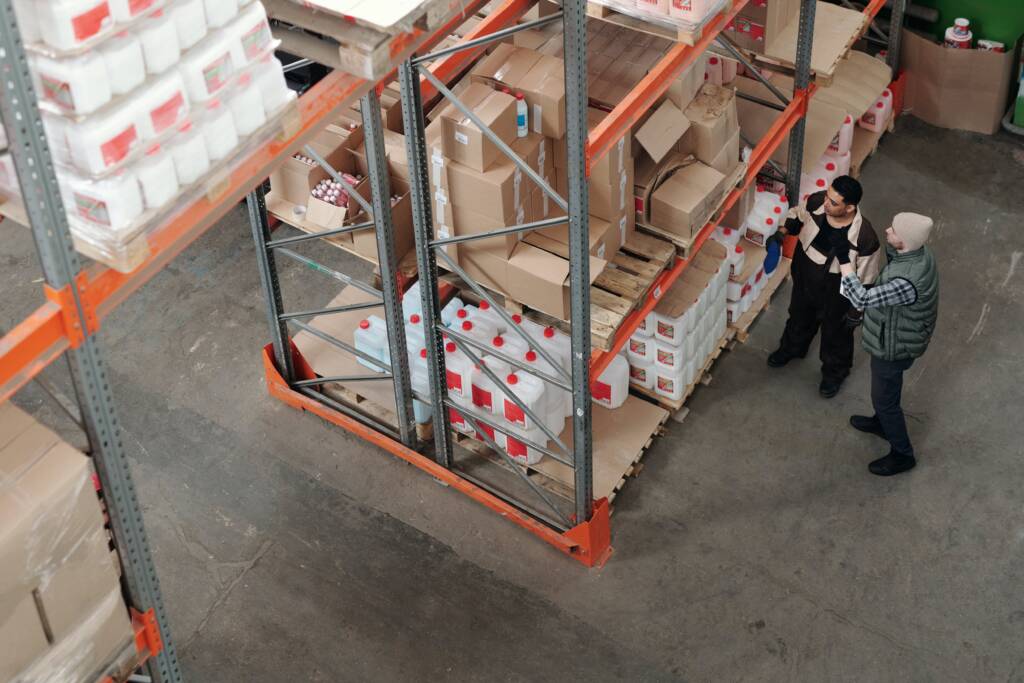If you’ve ever wondered how businesses manage the intricate dance of getting products from their origin to your doorstep without missing a beat, you’re in the right place. We’re here to break down the concept of Asset Based 3PL, also known as Third-Party Logistics, in the simplest way possible.
Think of it as your key to unlocking supply chain efficiency without getting lost in a maze of complex terminology. In this guide, we’ll explore what Asset Based 3PL is, how it works, and the incredible impact it can have on businesses of all sizes.
No need for a degree in logistics – we’re here to provide you with straightforward explanations and real-world examples that anyone can grasp.
So, if you’re ready to discover how companies streamline their operations, reduce costs, and ensure products reach their destinations smoothly, fasten your seatbelt (figuratively, of course), because we’re about to take off on a logistics adventure that’s informative and accessible.
Let’s dive into Asset-Based 3PL and unravel its potential for businesses like never before.
Understanding the Concept of Asset Based 3PL
Asset-Based Third-Party Logistics, often referred to as 3PL, is a crucial aspect of modern supply chain management. At its core, it’s all about optimizing the movement of goods from manufacturers to consumers in the most efficient way possible.
What is 3PL? Third-party logistics (3PL) companies are like the maestros of shipping and handling. They step in to help businesses manage their logistics processes. Think of them as expert conductors in the orchestra of shipping, coordinating everything from storage to transportation to ensure that products get to where they need to be.
Now, when we talk about “asset-based” 3PL, we’re adding a special twist. These companies don’t just manage the logistics, they own and operate the physical assets too. That means they have their own warehouses, trucks, and other equipment. This can lead to greater control and flexibility in managing the supply chain.
The beauty of asset-based 3PL is that it simplifies a complex web of logistics. Businesses can focus on what they do best while leaving the nitty-gritty of transportation, warehousing, and distribution to the experts. It’s like having a logistics partner that takes care of all the heavy lifting.

Advantages of Asset Based 3PL in Supply Chain Management
When it comes to enhancing supply chain management, asset-based Third-Party Logistics (3PL) offers a host of benefits:
Control and Consistency: Asset-based 3PL providers have a direct hand in managing and maintaining their own assets. This control ensures a higher degree of consistency in service, reducing the risk of disruptions in the supply chain.
Faster Response Times: With their own trucks, warehouses, and equipment, asset-based 3PLs can react swiftly to changing demands. This agility can be a game-changer in meeting tight delivery schedules.
Customized Solutions: Asset-based 3PLs can tailor their services to match the unique needs of businesses. They can design logistics solutions that fit the specific requirements and challenges of each client.
Cost Control: By owning and operating their assets, these providers can often manage costs more effectively. This can result in cost savings for the businesses that partner with them.
Reduced Complexity: Asset-based 3PL simplifies the logistics puzzle for businesses. They can hand off the complexities of warehousing, transportation, and distribution to experts, allowing companies to focus on their core operations.
Scalability: Asset-based 3PLs can scale their services to accommodate growth. As a business expands, it can adapt its logistics solutions to match the increased demand.
Disadvantages of Asset Based 3PL in Supply Chain Management
While asset-based 3PL has its advantages, it’s not without its challenges:
Limited Network: Asset-based 3PLs may have a more limited network compared to non-asset-based providers. This can be a drawback when trying to reach more remote or less serviced areas.
Ownership Costs: Owning and maintaining assets can be costly. These costs may be passed on to the client, potentially making asset-based 3PL services more expensive.
Reduced Flexibility: While asset-based 3PLs offer control, this control can sometimes translate to less flexibility in adapting to rapidly changing market conditions.
Overcommitment Risk: These providers might over-commit to their own assets, which could lead to underutilization or inefficiencies in some cases.
Complexity of In-House Operations: Some businesses prefer not to be involved in the direct ownership and management of logistics assets due to the complexities and responsibilities associated with it.
Risk of Asset Limitations: If an asset-based 3PL’s assets become outdated or insufficient, it may hinder their ability to meet the evolving needs of clients.
Let’s break it down in an easy-to-read table for better clarity:
| Advantages | Disadvantages |
|---|---|
| Control and consistency. | Limited network. |
| Faster response times. | Ownership costs. |
| Customized solutions. | Reduced flexibility. |
| Cost control. | Overcommitment risk. |
| Reduced complexity. | Complexity of in-house operations. |
| Scalability. | Risk of asset limitations. |
Key Considerations When Choosing an Asset Based 3PL Provider
When selecting the right asset-based Third-Party Logistics (3PL) provider, it’s crucial to consider a range of factors. Let’s delve into these considerations while using transition words for a smoother flow:
Asset Quality and Capacity:
First and foremost, assess the quality and capacity of the 3PL’s assets. Moreover, consider whether their warehouses are well-maintained and if they have an ample number of trucks and equipment to meet your needs. It’s essential to ensure their assets align with your business requirements.
Geographic Reach:
In addition, think about the provider’s geographic reach. Does their network cover your target markets and distribution points? A 3PL with a broader reach can better serve your needs, especially if you have a diverse customer base.
Customization Abilities:
Furthermore, investigate the provider’s ability to tailor their services to your specific needs. Your supply chain requirements may be unique, and a one-size-fits-all approach may not work. Look for a provider that offers customization.
Technology and Integration:
In today’s tech-driven era, technology takes center stage. Therefore, inquire about the 3PL’s tech capabilities and whether they can seamlessly integrate with your systems. Effective data sharing and visibility are crucial for smooth operations.

Service Quality and Track Record:
Another critical factor is the provider’s track record. Do they have a reputation for delivering goods on time and in good condition? Additionally, consider their performance history and client testimonials.
Cost Structure:
It’s also imperative to understand the provider’s pricing model. Is it transparent, and does it fit your budget? Be sure to inquire about any hidden fees or unexpected costs.
Scalability:
Moreover, consider whether the 3PL can grow with your business. As your company expands, will it be able to accommodate increased demand and adapt its services accordingly?
Communication and Support:
Effective communication is vital throughout the partnership. So, evaluate the provider’s responsiveness and accessibility. Having a reliable point of contact can make problem-solving and coordination much smoother.
Compliance and Certifications:
Ensure the provider complies with industry regulations. Besides, check if they possess the necessary certifications. This is especially crucial in industries with specific requirements, such as pharmaceuticals or food.
Risk Management:
Moreover, discuss how the 3PL handles risk management. This includes disaster recovery plans and insurance. It’s important to be clear on their procedures for mitigating potential disruptions to your supply chain.
Sustainability Initiatives:
In today’s eco-conscious world, it’s important to consider the provider’s sustainability efforts. Are they committed to eco-friendly practices, and can they help your business achieve sustainability goals?
References and Due Diligence:
Don’t hesitate to request references from the 3PL. Also, consider contacting existing clients to get a firsthand account of their experiences.
Exit Strategy:
Lastly, understand the terms and conditions for ending the partnership. A well-defined exit strategy is essential as it can save you from potential complications in the future.
Steps to Implementing Asset Based 3PL in Your Supply Chain
When it comes to integrating asset-based Third-Party Logistics (3PL) into your supply chain, a well-structured approach is key. Let’s explore the essential steps in this process, using transition words to guide you through the implementation:
- Assessment and Alignment: Evaluate your supply chain needs and align goals.
- Research and Selection: Research and select a suitable asset-based 3PL provider.
- Customization Planning: Collaborate to customize services to your specific requirements.
- Technology Integration: Ensure seamless integration of technology systems.
- Pilot Implementation: Test the partnership with a small-scale pilot project.
- Training and Education: Train your teams and educate them on new logistics processes.
- Transitional Period: Maintain clear communication during the transition from your previous logistics setup.
- Performance Metrics: Establish and monitor performance metrics and KPIs.
- Continuous Improvement: Regularly assess performance and seek areas for improvement.
- Scaling and Expansion: Consider scaling the partnership as needed for growth.
- Review and Optimization: Periodically review terms, costs, and service quality, optimizing as necessary.
- Contingency Planning: Develop plans for handling potential disruptions and challenges.
By following these steps with appropriate transitions, you can smoothly and successfully implement asset-based 3PL into your supply chain. This process enhances efficiency, reduces costs, and streamlines your logistics operations for long-term success.

Conclusion: Scoop on Asset Based 3PL for a Smoother Supply Chain
Let’s cut to the chase. In the complex world of supply chain management, asset-based Third-Party Logistics (3PL) is like a well-oiled machine that can make your life easier. Let’s be real – It’s not a magic wand, but it’s pretty darn close.
We’ve laid out the pros and cons. On the bright side, asset based 3PL brings you control, quicker response times, and services tailored to your needs. It’s like having a logistics genie that simplifies your life, letting you focus on your core business while they handle the logistics nitty-gritty.
But, and it’s an honest ‘but,’ there are a few challenges to watch out for. Limited reach, ownership costs, and possible inflexibility can be speed bumps on this journey.
So, how do you make it work for you? Follow the plan: assess, research, customize, integrate, pilot, train, and monitor performance. If it works, scale it up.
In the end, asset-based 3PL isn’t a silver bullet, but it’s pretty close. It’s your ticket to a smoother supply chain that keeps your customers happy and your bottom line healthy. So, grab that opportunity, make it work for you, and watch your supply chain become a lean, mean, efficient machine.

